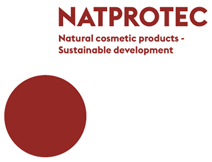
The discovery and development of innovative products in the area of cosmeceuticals originating from European natural resources is the main aim of an EU funded project with the acronym NATPROTEC (FP7-PEOPLE-IAPP-2010 Marie Curie Actions). The project being now in the second year of its implementation has a duration of four years and a total budget of 2.2 M€. Under the coordination of Prof. Leandros Skaltsounis, who is Professor of Pharmacognosy and Natural Products Chemistry in the Faculty of Pharmacy (National and Kapodistrian University of Athens, Greece), the consortium brings together experts who are individually considered as world leaders in their respective areas:
• Four academic entities: National and Kapodistrian University of Athens (Greece), University of Geneva (Switzerland), University of Innsbruck (Austria) and University of Reims Champagne-Ardenne (France), with documented high quality research activity in the field of natural products, bioprospection, phytochemistry and biology.
• Four industrial partners: Rousselet Centrifugation SA – Kromaton (France), internationally leading in natural product fractionation by solid-liquid or liquid-liquid extraction and Centrifugal Partition Chromatography technologies, KORRES SA (Greece), recognized for its expertise in natural cosmetics, Bionorica Reserach GmbH (Austria), specialized in exploitation of plant derived natural products and CAMAG (Switzerland), renowned worldwide for its unique expertise in High Performance Thin Layer Chromatography.
The scientific concept of NATPROTEC involves the discovery of bioactive natural products originating from the Mediterranean and Alpine biodiversity by using emerging and environmentally friendly technologies. A structurally diverse virtual database of natural compounds was initially created comprising about 1200 compounds from already existing chemical libraries of the consortium. The rational and targeted selection of the most promising natural sources/plants has been achieved by exploiting modern high throughput platforms, under the approach of reverse pharmacognosy. Computer-guided approaches have been performed against tyrosinase and histone deacetylase (HDAC) for a fast identification of bioactive compounds to be tested in in vitro assays. In parallel, the classical pharmacognosy approach, based on traditional knowledge and literature, was followed. According to the results so far, a total of ~300 plant species were collected and extracted producing ~600 extracts. A broad spectrum of bioassays was elaborated for the in vitro evaluation of multiple skin protective effects (DPPH, ABTS, ORAC, ALP, QR induction, HDAC activity). The evaluation of their anti-ageing properties (inhibition of elastase, hyaluronidase and collagenase activity) and their anti-hyperpigmentation activity (inhibition of tyrosinase activity) is in progress. The most promising extracts (~20) will be micro-fractionated and resubmitted to biological evaluation. Advanced analytical approaches and techniques (HRMSn, cap-, micro-, LC-SPE-NMR, LC-HR-MSn, CPE/CPC-NMR) will be used for the bioactivity-oriented isolation and structure elucidation of the active constituents and/or extracts. The physicochemical and passive permeation properties of the pure compounds will be evaluated while quantitative metabolomic analyses for characterizing the physiological response to pure compounds will be performed aiming to the quality assessment of the lead products. Attention will be given to the selection of the most suitable source of biomaterial in terms of biological activity and the metabolite profile. Further tasks consist in product development and optimisation by application of emerging “green” technologies (SFE-CO2, SWE, ART, CPE using bio-based solvents) for a pilot scale production of the final lead products.
The main goal and the respective objectives of the NATPROTEC project is being implemented in the context of an extensive and balanced scheme of exchanges and recruitments of researchers, between industrial and academic partners. Within this frame, core scientific knowledge and cosmeceutical agents are expected to be produced creating valuable synergies. The transfer of knowledge will significantly increase the research quality, as well as the overall RTD capability and competitiveness of all participants. NATPROTEC aspires to comprise a successful model of an efficient, long-lasting collaboration between Industry and Academia for sustainable exploitation of existing know-how and produced knowledge. For further information and communication with the consortium please visit the website www.natprotec.eu


